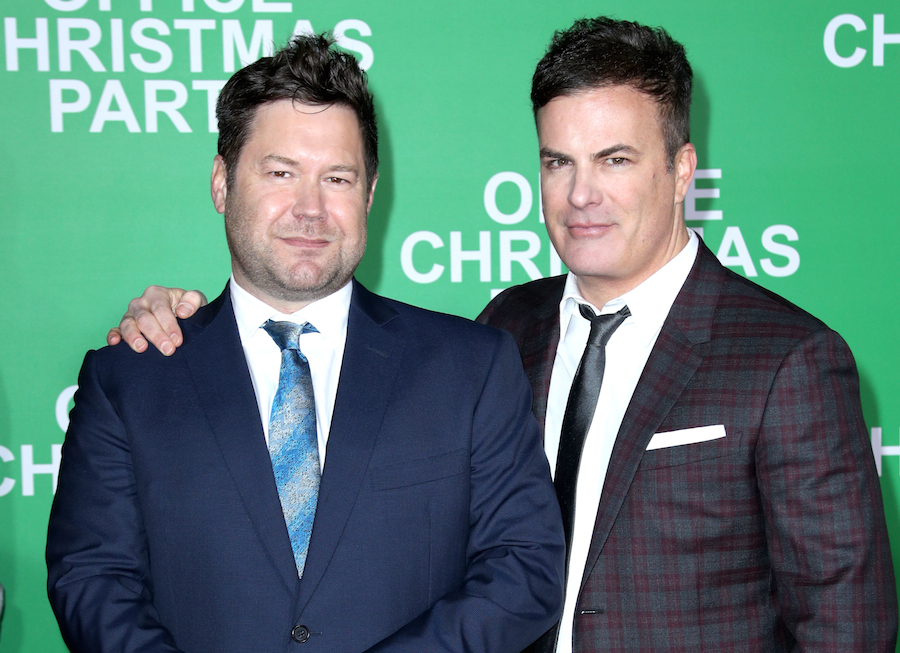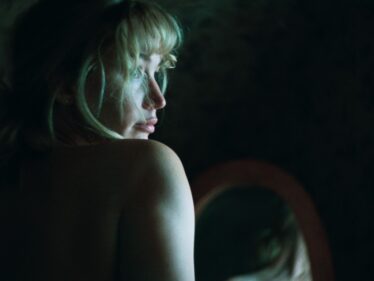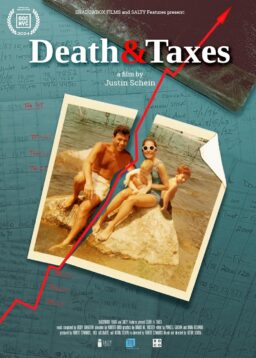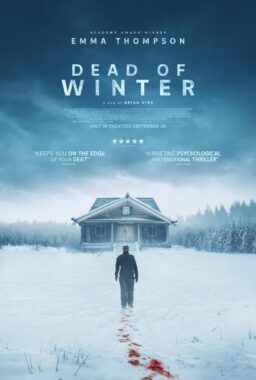Will Speck and Josh Gordon’s “Office Christmas Party” is the cinematic equivalent of a holiday bonus for everyone involved. It features an ensemble packed with performers who have had a great year, such as Jason Bateman (“Zootopia”) and T.J. Miller (“Deadpool”), as well as Courtney B. Vance (“The People v. O.J. Simpson”) and Kate McKinnon (“Saturday Night Live” and the best part of “Ghostbusters”), both fresh off their Emmy wins. Miller plays the manager of a company’s Chicago-based branch that is in danger of being shut down by its CEO (Jennifer Aniston). In a desperate act to impress a potential client (Vance), the co-workers turn their annual Christmas party into a lavish free-for-all that threatens to spiral out of control. There are several good laughs peppered amidst the silliness, and Chicagoans will especially appreciate (or perhaps, wince at) the moment when Miller spots a burning car and exclaims, “Did the Bears just win?”
Speck and Gordon spoke with RogerEbert.com about their approach to comedy, their love of the Windy City, and their film’s subtle nod to “The Apartment.”
I’m always fascinated by people who have an innate understanding of what is funny. Jon Heder’s wing-flapping choreography in your 2007 film, “Blades of Glory,” makes me laugh just thinking about it.
Will Speck (WS): Josh and I felt like the skating sequences in that movie were really the icing on a dense cake. Once we cast Will and Jon, we looked at their strengths as people and as actors, and figured out how we could start to choreograph a routine that took advantage of them. Jon is such a good dancer. We saw “Napoleon Dynamite” before we had cast him, and we were amazed by how funny he was with his body during the climactic dance scene. There’s also something very graceful about him, and that’s how we came up with the idea to make him a bird, which we ripped off from Johnny Weir’s swan outfit at the Olympics. That provided our choreographer, Sarah Kawahara, with a jumping off point and together we brainstormed about what a beautiful peacock dance would look like. Jon just took the idea and ran with it. In contrast, we knew that Will was going to be full of sexuality, and sort of a brute force while still being very clumsy and charming, which is what Will Ferrell is. That’s an example of how we approach finding what is funny. We identify something in an actor that they do really well, and we try to figure out how we can subvert it.
Josh Gordon (JG): This sounds pretentious, but I think it’s an ephemeral thing—it’s a vibration. When people are performing in a musical, everybody is intuitively drawn to the right pitch. You don’t want to be too broad that people can’t relate to it, so it has to have some grounding in the real world. We always talk about “Blades” as basically being a documentary about the ice skating industry.
Your first directorial efforts were the short films “Angry Boy” and “Culture” [co-starring Philip Seymour Hoffman], which both won prizes at the Chicago International Film Festival in 1997.
JG: Will and I met each other at NYU Film School. When we first came out to LA, we had day jobs. I worked on a TV show, Will worked for a producer, and every night we would come back and write our scripts. The only things that we knew how to make were short films, because that’s what we made at school. Our first short was “Angry Boy,” which was produced through the Fox Movie Channel. We made that film with some friends, and it was a very short piece. “Culture” was a much more ambitious film, and went on to get nominated for an Oscar. That film felt like a feature that just happened to run for 30 minutes and we poured every last dollar we had into making it. Both shorts were comedic, and they were the first times we expressed our sensibility on film.
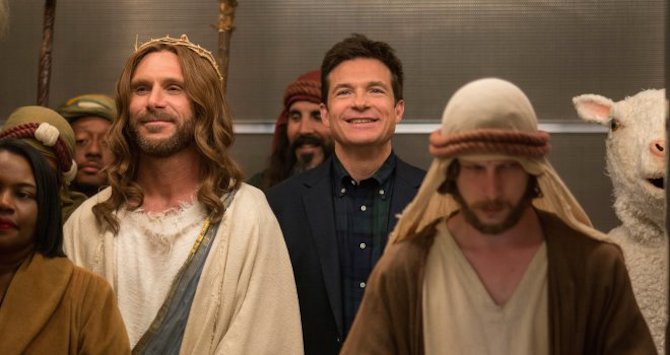
What drew you back to Chicago for “Office Christmas Party”?
WS: This isn’t lip service—it was very important for us to set the movie in Chicago. We don’t want to say the cliché of, “it’s a character in the movie,” but—
JG: But it’s a character in the movie. [laughs]
WS: We didn’t want to choose a coastal location like New York or LA. The setting had to reflect the characters. These were people who pulled themselves up from the bootstraps and were determined to make something out of nothing. I grew up in Ohio, and I felt that there was a midwestern element to the spirit of these characters. Josh and I connected over all of John Hughes’ movies as well as John Landis’ early movies. We very much had in mind the sequences set downtown in “The Blues Brothers” where cop cars are all over the plaza and people are running and burning through the bridges of Chicago.
JG: During the wintertime in cold cities, you sometimes need a party to break through the melancholy.
You need a dose of anarchy to build up the body heat.
WS: [laughs] Exactly! When you’re putting together a movie, you always struggle with the budget. One thing we were struggling with was how much snow to add in visual effects. Like a lot of the country, it had been a pretty dry winter here in terms of snow. The studio had told us that we could add visual effects to the last act of the film, because it involved a big snowstorm that was a crucial story point, since it’s the reason Jennifer Aniston can’t get out of the airport. We were bummed because we had wanted snow throughout the whole movie, but the studio couldn’t afford it. And then, the very first day we began shooting in Chicago—
JG: It dumped snow. We were so excited.
WS: On the second day, we shot interiors in Chicago, and it didn’t snow. Then on the third day, we shot on the Clark Street Bridge, and it snowed again. It was one of the biggest drops of snow the city has had apparently, according to our crew.
JG: We felt like the city really wanted us.
I was reminded of “Blues Brothers” when Bateman and Miller are debating how fast a car would have to move to sail over an open bridge.
WS: That was an entirely conscious reference on our part. We wanted the tone of the film to be halfway between the anarchy of “Blues Brothers” and the sentimentality of “Planes, Trains and Automobiles.” That was what drew us to Chicago. It’s a very Christmasy city.
JG: It’s also an amazing city to see visually on film. You come here and you’re like, “Oh that’s why ‘The Dark Knight’ looks so good.” It just has a grand scale to it. No place, not even New York, looks this good from street level. People had money a hundred years ago and they built this city right.

Going back to the idea of subverting actors’ strengths, I thought it was interesting to cast someone as infectiously exuberant as Kate McKinnon in the role of a prudish HR Director.
WS: We wanted to use this Christmas party as an occasion for all of the characters to make little shifts. Every party has a parent and in this case, our parent was our HR Director. We live in cautious times where HR has a very inflated sense of authority over companies. Of course, we wanted to make sure that we had someone who could play well in the back half, when the HR Director really lets loose, which is something that we knew Kate could do. Yet we also wanted someone who wouldn’t just bring a one-dimensional schoolmarm element to the first half, and Kate brought such a specificity to the character.
JG: She considers herself the most important person in the office. Early on, we talked about how her character loves her job.
WS: We knew that we were in good hands when we started to engage her on the character’s notion that the rules can be fun. She talked about how her staunch, strict policies are ultimately fueled by her desire to keep her job, which ultimately helps maintain her hobby of collecting birds. That was a quirk we slowly revealed throughout the film. Again, we didn’t want there to be a mustache-twisting person in the office. We wouldn’t let Kate play the part without allowing that character to have a lot of dimension and fun.
Jason Bateman’s role as the deadpan foil is reminiscent of his character on “Arrested Development.”
JG: Jason is so good at holding the center and reacting to insanity, which is the reason why he was our first choice and why we knew that he could anchor the movie. There are so many big personalities in the film, and you need that person that the audience can enter the story through. He is such a great everyman, and after working with him on this and “The Switch,” he has become kind of a muse for us. His timing is unlike anyone else’s right now. He’s like a younger Jack Lemmon.
Was “The Apartment” a film you had in mind as well?
WS: It’s funny that you mention “The Apartment,” because there’s a Christmas party in that film, and it takes place in an office. We always loved that scene, and it contains an image of people dancing on their desks. I think on a subconscious level, we paid homage to that scene in our film by having Miller, Vance and McKinnon dance on a stage that consisted simply of desks being thrown together.
Rather than emulate that film’s low-hanging ceilings, the production design in your film has a great deal of spaciousness.
JG: The visual language of a cubicle hell involving small, claustrophobic offices had already been done in “Office Space” and “The Office.” Will and I wanted to tell the story of a larger company, a big corporate entity that has maybe three or four hundred people in it. We knew that we wanted the scale to be much bigger, and that’s why we chose to set it in the building where we are presently having this interview: the old IBM building, which was built in the 70s. This is the building you see in the exterior shots filmed from the sky. For the interiors, we used the Federal Plaza, which has the same architect, Mies van der Rohe. The studio allowed us to build an almost 35,000 square foot two-story set because we knew that we were going to end up destroying it, and no actual office would let us shoot at their location. In order to emphasize the scale of the space, we shot it in anamorphic, which is a format used in many Landis movies.
WS: We also wanted it to feel like an office that was part of a bigger corporation. This saga of a branch rising was one story amongst many stories. Jennifer Aniston’s character represents an unseen corporate reality that she’s imposing on our group of underdogs. A film about a homegrown office that starts and ends within the same walls would’ve felt entirely different.
JG: Back when it was founded, this company had ambitions for itself. They built themselves a big kick-ass office, and they just haven’t been able to remodel it for over 30 years. Frankly, people are lucky to have jobs now, and we wanted to tell a story about a big group of people who are just holding on by their fingernails and don’t want to have to look for a new job.

When you are working with people who often write their own material, such as T.J. Miller, how much leeway do you give them in terms of creating their characters?
WS: We shot a very healthy, well-calibrated script, and though we did have an onset joke writer, we would always encourage our writers to add improvisation. Within the confines of the script and the story, the actors were able to make the material their own. T.J. would spin the way a word was said, or he would the subvert the pronunciation of somebody’s name. There are little details that are very T.J. in the film where his writing came in handy, but since his character—who is an innocent—is such a key part of the story, he stuck to the script. Most of the actors did, yet once they understood their characters, we let them go.
Also among the ensemble is Abbey Lee, who brought down the house with a single flick of her lip in “The Neon Demon.”
JG: Her role was a very hard one to cast because you don’t want it to be a cliché or a thin part. She came in during casting, and Will and I were in a room with a monitor screening audition footage, yet we were busy doing other things. He was at a casting board and I was looking at a model of the set, and we simultaneously turned toward one another once we began hearing her voice from the monitor. We walked over to the screen and watched her audition. Will said it was like watching Michelle Pfeiffer. She’s incredibly sexy and the most powerful presence in any room, yet she was able to play the comedy in a very impressive way.
WS: Another Chicago-based film that is a seminal movie for Josh and I is “Risky Business,” and Abbey very much reminded us of Rebecca De Mornay.
One of the biggest laughs in the film comes courtesy of Fortune Feimster as the Uber driver, with her hilarious riffing on the name Carol.
WS: That’s a good example of a bit that really came from the performer. It was a tricky scene because on the page, it was very flat. It was about a Second City improvisational actor who was trying to imitate characters like Borat. The scene was okay, but it wasn’t anything that you hadn’t seen before. At lunch, Fortune and Jillian Bell, who are very close, asked us if we had space to run some ideas for the scene, and we said absolutely. They spoke with our onset writer, and they came up with the idea of having the Uber driver think that she’s on an episode of “Undercover Boss.” The whole Carol thing was on her feet. She came up with that idea, and it was something that we loved so much that we brought it back at the end of the film. That was a good example of somebody who writes their own material and can make something huge out of nothing. We gave her a lot more leeway too because it was just a one-off role as opposed to T.J., who was very calibrated throughout the movie. This scene was an opportunity for someone to just come in and nail it, and she did.
Header photo by Jonathan Leibson/Getty Images for Paramount Pictures

